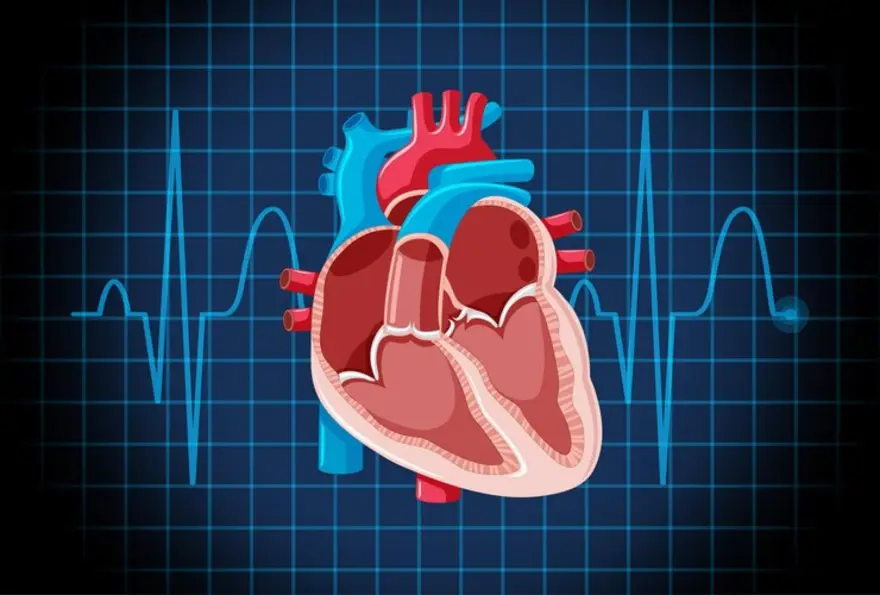Treatment in Rheumatoid Arthritis
What is Psoriatic Arthritis: Symptoms, Treatment & Causes
Introduction Psoriatic arthritis is a type of arthritis that affects individuals with , the disease that causes red patches on your skin that are usually topped with silvery scales. Psoriasis can occur years before you may get diagnosed with psoriatic arthritis, but in rare cases, the joint pain can start before the development of the skin patches or even at the same time. Joint pain, swelling and stiffness are the main psoriatic arthritis symptoms but you can learn more about the symptoms, causes and treatment options below. What is Psoriatic Arthritis? This is a form of inflammatory arthritis that is characterised by swelling, joint pain and stiffness in the morning. It can vary from mild to severe and present in three different ways. Oligoarticular, which affects four or fewer joints in the body Polyarticular, affecting over four joints Spondylitis, this type, is less common but can affect the spine, hips, and shoulders. Symptoms of Psoriatic Arthritis Psoriasis and psoriatic arthritis are chronic diseases that can worsen over time. However, there can be several instances where the symptoms can improve and temporarily disappear. Since psoriatic arthritis affects the joints on either or both sides of the body, the symptoms are usually similar to rheumatoid arthritis. Both of these diseases cause your joints to swell, become painful, and cause the skin to feel warm to the touch. However, there are a few additional psoriatic arthritis symptoms in the case of psoriatic arthritis, such as Swollen fingers and toes: Psoriatic arthritis causes sausage-like swelling in your fingers and toes, which can become pretty painful. Foot pain: Psoriatic arthritis could be the reason behind pain in various areas where your ligaments and tendons meet the bones. Achilles tendinitis occurs at the heel's back and plantar fasciitis on the sole of your foot. Lower back pain: Many people who have psoriatic arthritis can also develop a condition known as spondylitis. This is caused due to inflammation of the joints between the vertebrae of the spine and the joints between the pelvis and spine. Changes in nails: Your nails may show tiny dents, crumble or even separate from the nail beds. Eye inflammation: Psoriatic arthritis is one of the main reasons behind uveitis, which can cause pain, blurry vision and eye redness. It can also lead to loss of vision if left untreated. Fatigue: A study in 2021 found that fatigue is another primary symptom associated with psoriatic arthritis. Skin: Similar to psoriasis, individuals with psoriatic arthritis will observe raised patches of itchy skin covered with silvery scales. Causes of Psoriatic Arthritis Psoriatic arthritis is an autoimmune disorder that recognises healthy tissue as a foreign object and launches an attack against it. In many cases, the error of the immune system can create inflammation, damage to joints and cause chronic pain. Genetics: Most medical experts are still unsure about what causes an immune system disorder. Still, one sure thing is that autoimmune diseases tend to run in the family, which points to genetics being a main factor for the conditions. Environmental triggers: Psoriatic arthritis also has environmental triggers like throat infections and physical trauma. It is believed that individuals with psoriasis who experience physical trauma are more likely to develop psoriatic arthritis than those whit psoriasis that do not experience trauma. Other factors: Psoriatic arthritis can also be triggered by stress, alcohol, smoking, inflammatory foods or a sudden withdrawal of corticosteroids or other medication. diagnosis of Psoriatic Arthritis To diagnose psoriatic arthritis, a doctor, usually a rheumatologist specialising in arthritis and other inflammatory diseases, will conduct a physical examination after asking the patient about their symptoms. They will also examine skin for signs of psoriasis and look for swollen joints or other joint deformities. Some of the tests they may recommend are imaging tests to view damage in joints, blood tests to evaluate the levels of inflammation, and skin biopsy to confirm if the skin lesions are signs of psoriasis. treatment of Psoriatic Arthritis Although there is no known cure for psoriatic arthritis at this time, a rheumatologist will recommend several different Psoriatic arthritis treatment options that include medication and lifestyle changes depending on the severity of the disease. Medication Most of the medications prescribed to individuals with psoriatic arthritis are aimed at reducing inflammation. These include Nonsteroidal anti-inflammatory drugs (NSAIDs) Steroids Skin creams Biologics Lifestyle changes A healthy lifestyle is perfect for most people, but it is perfect for anyone diagnosed with a chronic or debilitating disease. Here are the following lifestyle changes that the Arthritis Foundation suggests Eat healthy: It is essential to eat food that is good for your joints and heart and steer clear of inflammatory foods like dairy, alcohol, meats and processed food. Maintain a healthy weight: Excess amounts of body fat can increase the amount of inflammation in the body. Exercise: Low-impact physical activities like swimming, walking, biking, etc., are helpful for joint pain. Such movement helps reduce stiffness and maintain the muscles that support your joints. In conclusion Living a happy, healthy life is possible even with psoriatic arthritis. All you need to do is monitor your symptoms, follow your treatment plan, recognise and avoid things that cause flares, and seek mental health treatment if you struggle with triggers like depression, trauma, stress and anxiety. Regular blood tests can also help you keep track of your health and inflammation levels allowing you to mend your plan of action accordingly. Metropolis Labs offers a wide range of diagnostic tests that will enable you to keep regular tabs on your health and you can do this all from the comfort of your home, with a home collection of blood samples and the promise of quick and accurate test results.
Rheumatoid Arthritis Self-Care - Tips for Diagnosis & Managing the Disease
Rheumatoid Arthritis is a chronic disease of the immune system. It is an autoimmune disease where your body’s immune cells attack the lining of the joints, known as synovium. The causes for this condition are attributed to genetic factors and environmental triggers. An inflammatory process characterises Rheumatoid Arthritis in the synovium throughout your body. Your immune system is designed to fight bacteria and other foreign invaders that may cause harm to your body. In Rheumatoid Arthritis, the immune system mistakes the cells of the synovium as a foreign invader and begins attacking this lining of the joints. The synovium produces a fluid that helps the joint move smoothly. But as the cells of the immune system attack it, there is inflammation in these cells, leading to the eventual destruction of the cartilage and bone elements of the joint. As a result, one can experience pain, stiffness, and weakness, among other symptoms. The duration of these symptoms varies from one person to another. For some, the symptoms may be aggressive and progress rapidly. For others, it may take several years. There might also be instances where patients experience a period of time with symptoms (flare) and some with no symptoms (regression). What are The Symptoms of Rheumatoid Arthritis? The intensity of symptoms experienced varies over the different stages of Rheumatoid Arthritis. In the early stages, the symptoms include, Joint stiffness lasts for extended periods, such as half an hour. Experience stiffness in the same joints on both sides of the body. Unexplained pain, swelling and tenderness in smaller joints or multiple joints simultaneously. Fatigue and weakness. Symptoms and discomfort that last longer than six weeks. How is Rheumatoid Arthritis Diagnosed? In the earlier stages, the symptoms of Rheumatoid Arthritis may be similar to other types of arthritis. No singular, gold standard test determines the diagnosis of Rheumatoid Arthritis. Hence, the examination for diagnosing consists of a combination of physical and blood tests. ● Physical Examination The doctor or physician checks the joints for swelling or tenderness. The range of motion is also checked across different joints. During the physical examination, you may be asked about symptoms and your medical and family history for any genetic influences and instances of Rheumatoid Arthritis in relatives. ● Blood Examination Post the physical examination, blood tests are conducted to identify any forms of inflammation and autoantibodies that may indicate Rheumatoid Arthritis. The blood tests may include, Rheumatoid factor (RF) test and CCP antibody test (anti-cyclic citrullinated peptide)–. You can take a CCP Antibody test to distinguish it from other types of Arthritis. CCP antibody test is more specific and has less false positives in comparison to RF Erythrocyte sedimentation rate and C reactive protein – higher levels of these tests may indicate the condition. These are non-specific markers of inflammation Antinuclear antibodies – a positive or negative test helps with diagnosis. Complete blood count (CBC) -- is recommended when the doctor finds low red blood cells, an indicator of Rheumatoid Arthritis. ● Imaging Tests In combination with blood tests, imaging tests reveal the diagnosis and progression of the disease such that the doctor can monitor and provide treatment accordingly. The imaging tests recommended include, X-rays showcase the amount of joint damage. Ultrasound and Magnetic Resonance Imaging (MRI) to provide more details on the condition of the joints. These tests can show if the ends of the bones are slowly eroding over time due to inflammation. Imaging tests are also used between treatments to check the progress and results of medications and treatment. How is Rheumatoid Arthritis treated? There is no specific cure for the disease, but early investigations, diagnosis and medications can help keep symptoms under control. The inflammation can be reduced or stopped, and doctors can prescribe medications to relieve symptoms' remission. Treatment in Rheumatoid Arthritis usually involves medication such as disease-modifying anti-rheumatic drugs. Steroids -- Corticosteroids such as Prednisone help reduce inflammation and pain and slow joint damage. Conventional DMARDs -- are intended to slow the progression of rheumatoid arthritis and save the joints from permanent damage. They are used along with biologic response modifiers, such as methotrexate. Targeted synthetic DMARDs -- these are used when conventional and biological response modifiers do not work. Over-the-counter NSAIDs -- Non-steroidal Anti-Inflammatory Drugs can relieve pain and reduce inflammation during treatment. Therapy The doctor may refer you to a physical or occupational therapist to engage in exercises that can help keep the joint flexible. These modifications are also suggested to one’s daily activities to make them more manageable. For instance, helpful equipment and assistive devices can help you get dressed, get a better grip on holding objects, and so on. Surgery Surgery is often the last resort for rheumatoid arthritis when the medications fail to prevent or slow joint damage. The types of surgery that can reduce pain and improve function include, Tendon repair -- targeted to repair the tendons around the joint that have been loosened or ruptured due to inflammation. Total joint replacement -- the damaged parts of the joints are replaced by prosthetic parts. Synovectomy -- aimed to remove the synovium, the inflamed lining of the joints, to reduce pain and improve flexibility. Joint fusion -- only in cases where replacement is impossible, joint fusion is conducted to relieve pain and stabilise or realign a joint. Discussing the pros and cons of surgery before undertaking the procedure is crucial. Ensure that you are informed of all procedures before and after surgery. Other Forms of Self-Care to Manage Rheumatoid Arthritis While medications and treatment are essential, you can also contribute to your recovery by managing diet and lifestyle choices to control rheumatoid arthritis. Eating healthier, being involved in daily movement such as light walking, proper rest, and using heat treatments to relieve joint pain can help. A diet with Rheumatoid Arthritis may include supplements such as omega-3 fish oil and eliminating habits such as smoking, intake of junk food, and so on. Such habits can contribute to preventing and reversing the effects of rheumatoid arthritis in the long run. Consulting the doctor and therapists on recovery methods and cultivating a positive support system and environment are complementary in the recovery process from Rheumatoid arthritis.
 Home Visit
Home Visit Upload
Upload
















 WhatsApp
WhatsApp